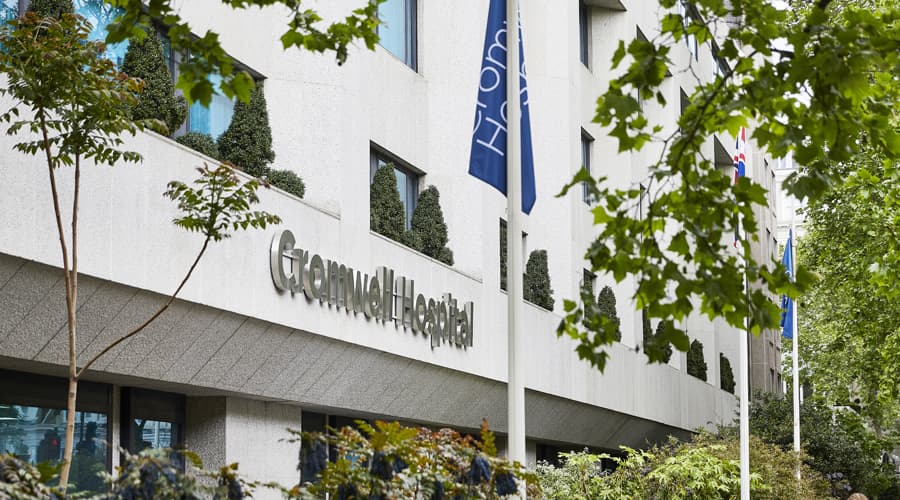Hybrid AF ablation programme
Hybrid ablation uses a combination of minimally invasive surgery and catheter ablation to treat cases of persistent atrial fibrillation (AF).
Reviewed by Mr Aziz Momin, Consultant Cardiac Surgeon and Dr Riyaz Kaba, Consultant Cardiologist
At a glance
Who's it for?
Patients with persistent atrial fibrillation.
What's involved?
This procedure involves destroying arrythmia-causing tissues on both the inside and outside of the heart.
What's recovery like?
Usually one (sometimes two) nights in hospital, with one week of recovery time, followed by 2-3 weeks of returning to full normal activities.
What is hybrid AF ablation?
Hybrid ablation uses a combination of two procedures to treat cases of persistent atrial fibrillation (AF): keyhole (minimally invasive) surgery and catheter ablation. There are different types of hybrid ablation for AF, but the latest and least invasive technique is called convergent hybrid ablation.
Catheter ablation is a procedure where thin, flexible tubes (catheters) are passed through the blood vessels to the heart. The catheters can help to identify regions where an abnormal heartbeat is occurring. Once identified, the abnormal tissue is destroyed using either heating (radiofrequency ablation), freezing (cryoablation) or other forms of energy.
In hybrid ablation, surgeons and cardiologists combine catheter ablation with minimally invasive video-assisted surgery, which allows them to treat the abnormal heart tissues more effectively from both inside and outside of the heart. This type of surgery uses a long, thin device called a pericardioscope, which has a tiny camera and light attached to one end. This allows the surgeon to see and operate inside the body.
In some cases, during the hybrid ablation procedure, your surgeon may choose to place a special clip or suture on a part of the heart called the left atrial appendage. This may help reduce your chances of having a stroke in the future.
Hybrid ablation is used in patients who have persistent atrial fibrillation with dilated left atria (the chamber of the heart in which AF usually occurs).
This procedure may also be suitable for patients who have had unsuccessful treatment for their persistent AF, such as catheter ablations or failed DC cardioversions, in the past.
There are two parts to a hybrid ablation procedure: the surgical portion (convergent and left VATS left atrial appendage occlusion), which is carried out by a cardiac surgeon, and the ablation portion (endocardial AF ablation), which is carried out by a cardiologist.
Convergent and left atrial appendage management
The first part of the procedure uses video-assisted surgery (VAS). A small incision is made just below the breastbone, so that a pericardioscope (a video-guided surgical device) can be inserted and your surgeon can see and access the outside of your heart. Your surgeon will then use radiofrequency ablation to destroy any heart tissues causing your AF.
During your procedure, the surgeon will also fit something known as left-atrial appendage occlusion device. This device may reduce your chance of having a stroke by up to 90% and can sometimes be an alternative to oral anti-coagulant medication.
Using VATS (video-assisted thoracoscopy surgery), your surgeon will create three small incisions on the left-hand side of chest, so that they can access a part of the heart called the left-atrial appendage. The left-atrial appendage is then closed off with a special clip so that appendage no longer receives blood. This prevents blood clots from forming and reduces your chance of having a stroke.
Endocardial AF ablation
The second part of the procedure is performed a couple of weeks after the first procedure and involves catheter ablation inside the heart. Long, thin tubes (catheters) are inserted into the body through the groin, before being guided into place inside the heart. Your cardiologist then uses either heating (radiofrequency ablation), freezing (cryoablation) or other forms of energy to destroy the abnormal tissues inside the heart.
Following each procedure, you will usually stay in the hospital for one to two nights. After that, you’ll need to avoid any strenuous activity for two to three weeks.
You will continue to have regular follow-ups with your consultants to monitor your progress.
Meet the team
Hybrid AF ablation is carried out by Mr Aziz Momin, Consultant Cardiac Surgeon, and Dr Riyaz Kaba, Consultant Cardiologist. Both consultants hold a wealth of experience in their respective specialties, having completed their training at several of the UK’s most renowned teaching hospitals.
In 2019, 2022, and 2023, Mr Momin and Dr Kaba performed the highest number of hybrid AF ablations in Europe. They are currently also the only hybrid team in the UK to provide convergent and VATS left atrial appendage occlusion during the same surgery.
Why choose us for hybrid AF ablation?
Most experienced team in Europe
In 2019, 2022, and 2023, Mr Momin and Dr Kaba performed the most hybrid AF ablation surgeries in Europe.
Unique combined surgeries
Our consultants are currently the only hybrid team in the UK to provide convergent and VATS left atrial appendage occlusion during one surgery.
Minimally invasive technique
Patients who undergo minimally invasive procedures may benefit from faster recovery times and reduced scarring.
Seamless and supportive care
Our team of consultants, nurses and technicians are with you from start to finish, ensuring you feel supported throughout your treatment.
Paying for your treatment
We welcome both self-paying and insured patients.
Self-pay patients
We offer several ways for patients to self-pay, including pay-as-you-go and self-pay packages.
Insured patients
At Cromwell Hospital, we accept private health insurance from most major providers, including AXA, Aviva, Bupa, and Vitality.
Our locations

Book an appointment today
Our telephone lines are open 8am to 8pm Monday to Friday and 8am to 2pm Saturdays.
Alternatively, fill out our appointment request form and we'll be in touch shortly.
Please note - regrettably we are unable to answer specific medical questions or offer medical advice via email or telephone.
